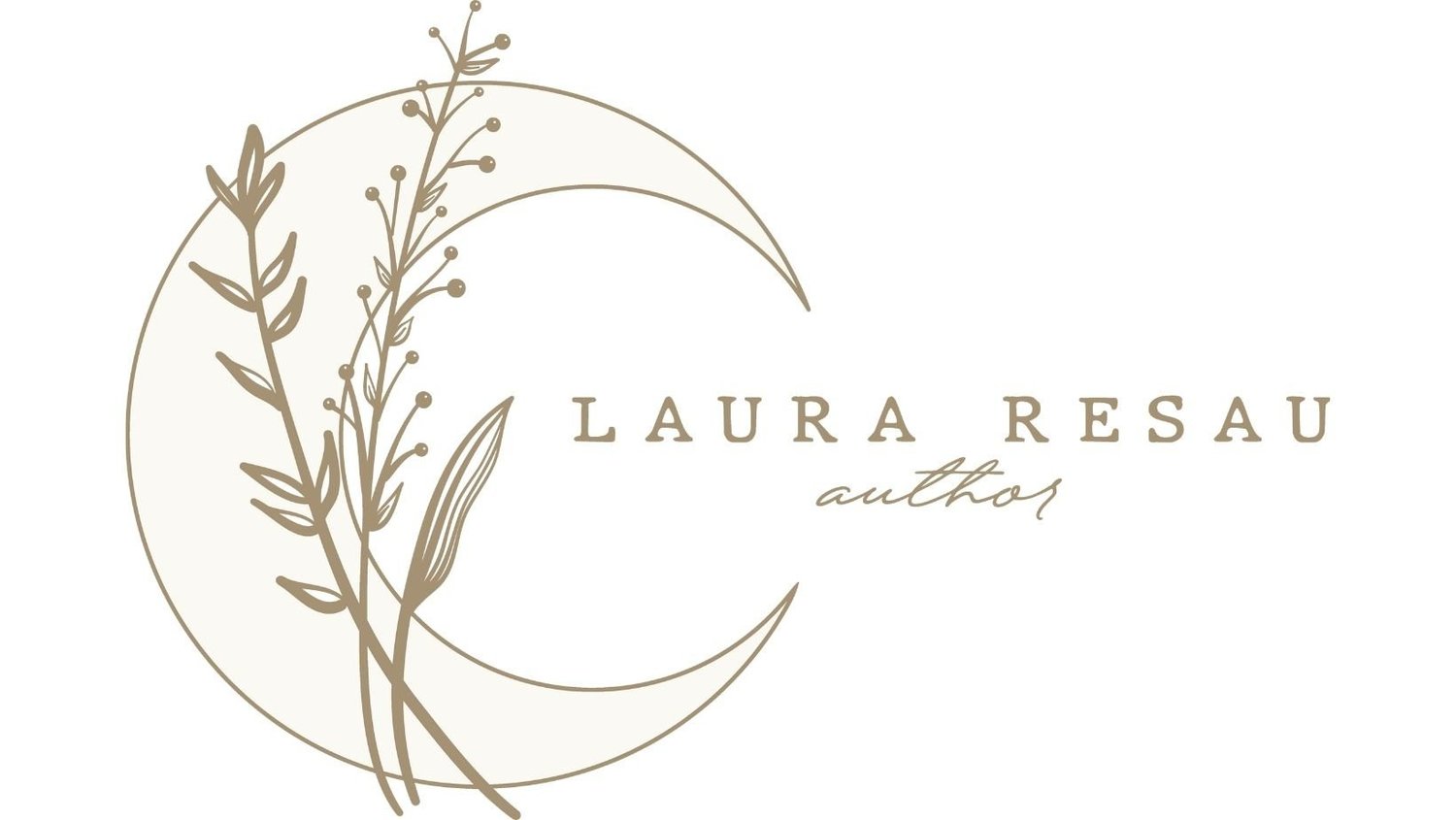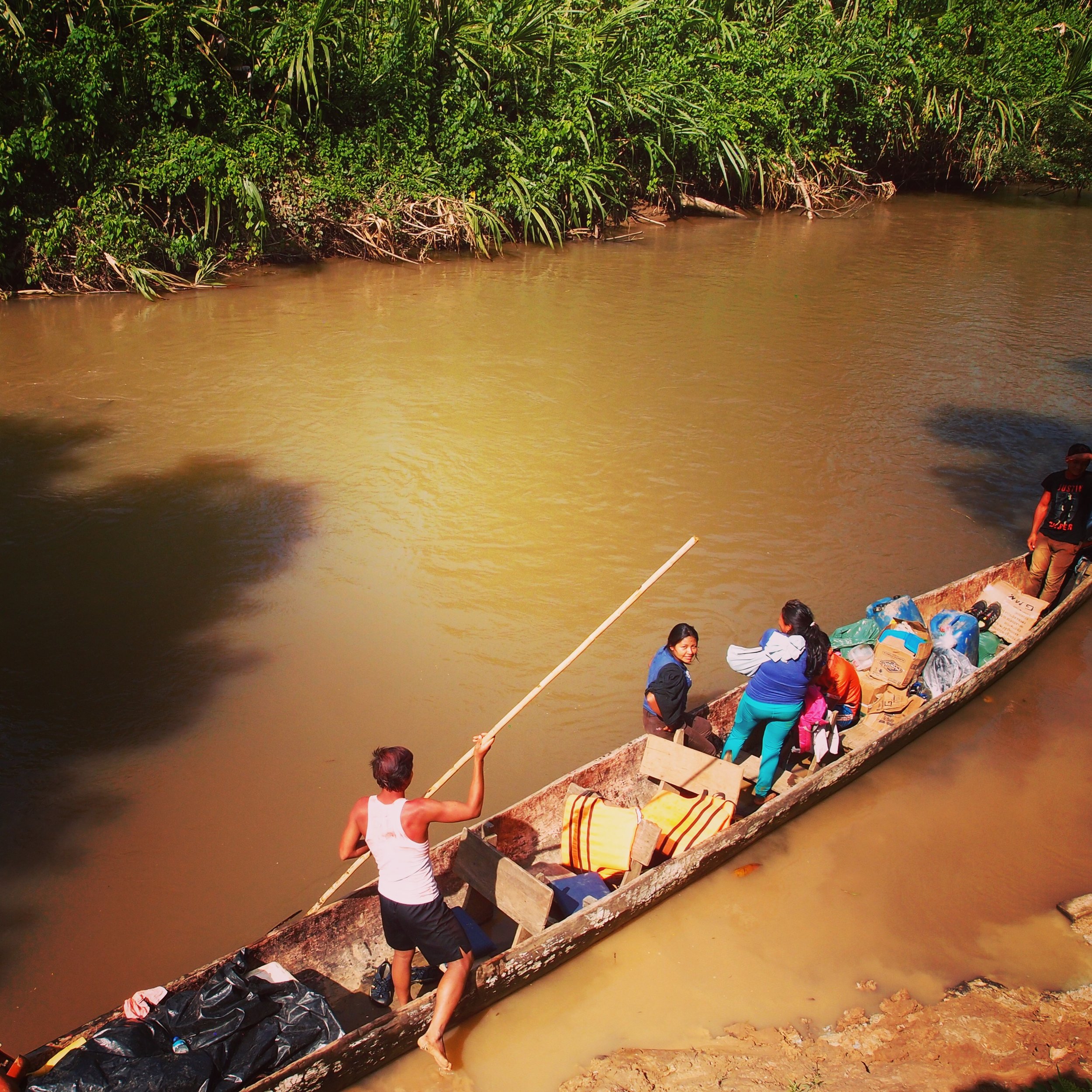Interview with Laura Resau
Stand as Tall as the Trees: How an Amazonian Community Protected the Rain Forest, co-authored with Patricia Gualinga
Tell us about the book.
Stand as Tall as the Trees: How an Amazonian Community Protected the Rain Forest tells the true story of my Ecuadorian co-author, Patricia Gualinga’s, journey to help her Indigenous Kichwa community defend their sacred rain forest home from oil exploitation.
As a child, Paty feels frightened by stories she heard of the sacred beings who ruled the rain forest and punished those who lacked respect. She leaves her forest home to go to school and work as a young woman, but is called back when her Kichwa community of Sarayaku is invaded by an oil company.
To prevent destruction of what they love, she and her community must find strength from the forest and the sacred beings within it. They join together with environmental and Indigenous rights organizations and win a landmark case in the Inter-American Court of Human Rights. Their successes inspire other communities in the Amazon and beyond to protect their ancestral lands.
The story leaves readers feeling uplifted, with a deeper understanding of the ecology and spirituality of the Amazon rain forest and the Indigenous people who protect it.
Tell us about your co-author.
My Ecuadorian co-author, Patricia Gualinga—known as Paty in the book and to her friends—is an extraordinary woman and I feel deeply fortunate to have worked with her. As a defender of Indigenous rights and the environment, she’s had strong leadership roles within her Kichwa community of Sarayaku, and with Amazonian women activists from other Indigenous communities. She works with international organizations, traveling around the world as a spokeswoman for the Indigenous-led proposal of the “Living Forest”—a call to protect the Ecuadorian Amazon and defend ancestral lands from threats like oil operations. Her courage in the face of attempted intimidation and death threats is an inspiration to us all.
Patricia Gualinga, Co-author
Tell us about the illustrator.
Through brilliant watercolor art, the Ecuadorian illustrator, Vanessa Jaramillo, brings to life the rain forest and communities who protect it. Her husband is from an Indigenous Shuar community in the Amazon, and her artwork draws on her time spent there with family as well as her educational work in the rain forest. Her vibrant and culturally authentic art is suffused with love and respect for the Amazonian ecosystem and the Indigenous communities who are working hard to defend it. My co-author, Patricia Gualinga, was the one who suggested Vanessa as an illustrator, knowing she was not only a talented artist, but also committed to the environmental and Indigenous rights messages in the book.
Vanessa Jaramillo, Illustrator
Why is this story important?
Stand as Tall as the Trees is unique because it’s a collaboration with an inspiring Indigenous leader in the Amazon, Patricia Gualinga, and fills a gap in children’s literature. As far as I know, there are no other children’s books on this topic that are authored by an Indigenous person who grew up in the Amazon and who can offer personal experiences, perspectives, and wisdom.
The environmental and Indigenous rights activism in Patricia’s community has led the way for other communities in the Amazon and around the world to protect their ancestral lands. The Kichwa people of Sarayaku embrace the idea that their rain forest ecosystem is alive, not just with plants and animals and humans, but also with sacred beings. Working together with international organizations, Indigenous people are helping the rain forest thrive, and defending it from threats such as the oil industry.
The Amazon is known as the lungs of the earth, and it plays a vital role in managing climate change and the health of our entire planet. The passionate work of Patricia and her community is an inspiring call to action for all of us.
Laura’s friends from a Waorani community in the Ecuadorian Amazon
How did your collaboration with your co-author, Patricia, come about?
A few years ago, I spent time in a remote, off-grid rain forest community in the Yasuní National Park of the Ecuadorian Amazon. The ecolodge where I stayed was run by a wonderful group of Indigenous Waorani people, who had enthusiastic ideas about writing and illustrating books about their experiences. When they found out I was an author, they asked if I could help them with their projects. I loved the idea and agreed to return within a year or so.
But when I was planning my return trip, I discovered that their ecolodge had closed because an oil company had invaded their home and buried dynamite in their sacred forest. My friends became displaced, their home and ancestral land was destroyed, and we lost touch. I felt devastated, furious, and heart-broken for them. Most of all, I felt an urgent need to help Indigenous Amazonian communities get the word out about the threats to their lives and homes.
I learned more about Indigenous-led movements that were addressing these injustices, and came across the incredible work of Patricia Gualinga and her Kichwa community of Sarayaku. She was a leading member of a group of Amazonian women committed to protecting their sacred forests, despite extreme opposition and even death threats. She spoke eloquently about the “Living Forest” concept, emphasizing how the spiritual and ecological aspects of the rain forest were intertwined. I felt that this was a message the world needed to hear, especially children.
I’d previously done a young adult novel collaboration with an Indigenous Ecuadorian woman who was also Kichwa, but from the Andes mountains. The Queen of Water, based on her true story, was life-changing for us both, and according to many of our readers, life-changing for them as well. I had a feeling that a collaboration with Patricia Gualinga could be just as rewarding. I felt that her powerful story could lend itself beautifully to a picture book, with vibrant illustrations bringing the rain forest community to life.
When I reached out to Paty about this idea, I felt thrilled that she was on board. During our conversations over video, email, and WhatsApp, her story took shape in a way that would make an inspiring and engaging story for children and their families and educators. For an illustrator, she suggested the talented Vanessa Jaramillo, who was also involved in Indigenous rights and education issues in the Ecuadorian Amazon, and who was a perfect fit for this project. It’s been deeply satisfying to work with these women and the team at Charlesbridge to bring Patricia’s story to a wider audience who will care about her community’s struggles and triumphs.
The Ecuadorian Amazon
How did you become interested in Indigenous rights and land issues in Latin America?
After college, I lived for two years in a small, rural town in Oaxaca, Mexico, located among many Indigenous communities. I felt fortunate that my students and their families welcomed me into their homes and lives. After becoming fluent in Spanish and learning the basics in several Indigenous languages, I studied for my Masters Degree in Cultural Anthropology at the University of Arizona, and returned to Oaxaca to do my thesis research with Indigenous healers and their patients. As my Mixtec and Mazatec friends shared their experiences with me, I became deeply interested in Indigenous rights issues, especially in relation to health and the land.
Back in the United States, while working with immigrants from Latin America, I met an Indigenous Ecuadorian woman named María Virginia Farinango, who came from a Kichwa community in the Andes. She asked me to co-author the true story of her childhood, which became the young adult novel The Queen of Water, and offers an intimate glimpse into the challenges Indigenous girls have faced in recent decades.
I’ve noticed that there are very few published books by Indigenous Latin American women, largely because they haven’t been offered an entry point into the book industry. Since I’m fortunate to be in a position to help lift up their voices, this has become a priority for me in my writing career.






